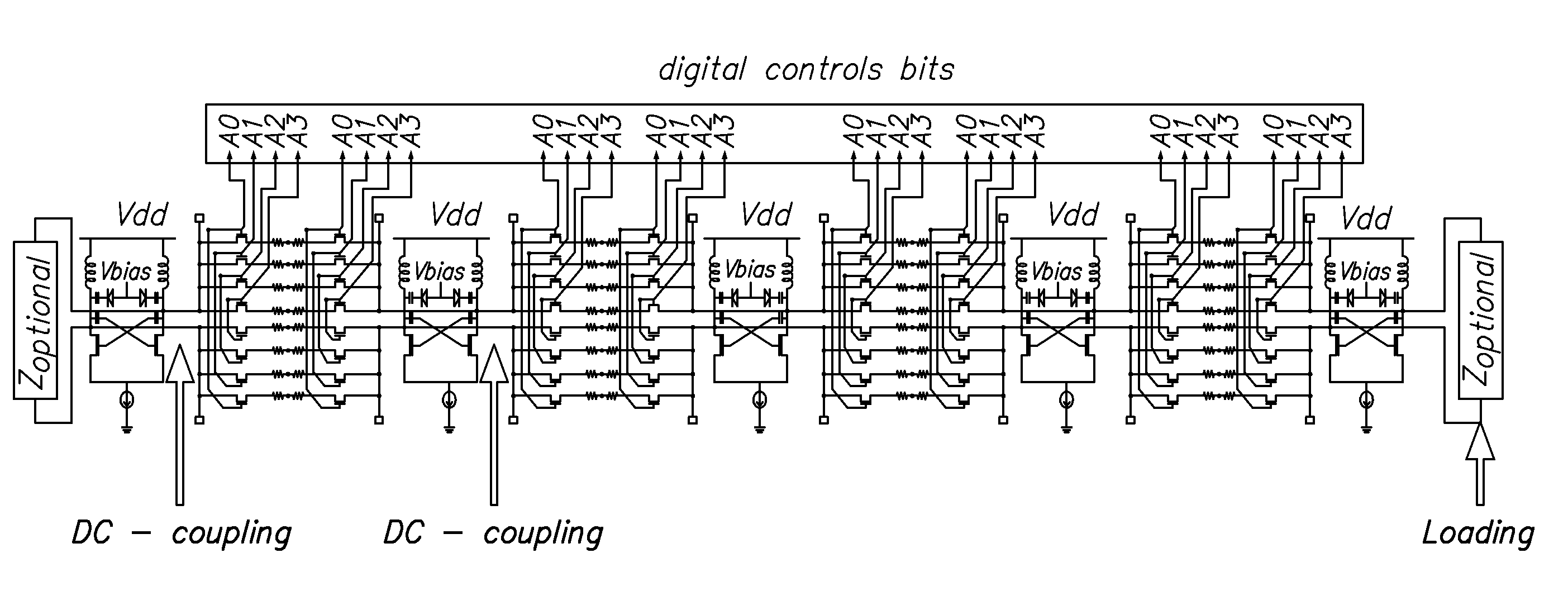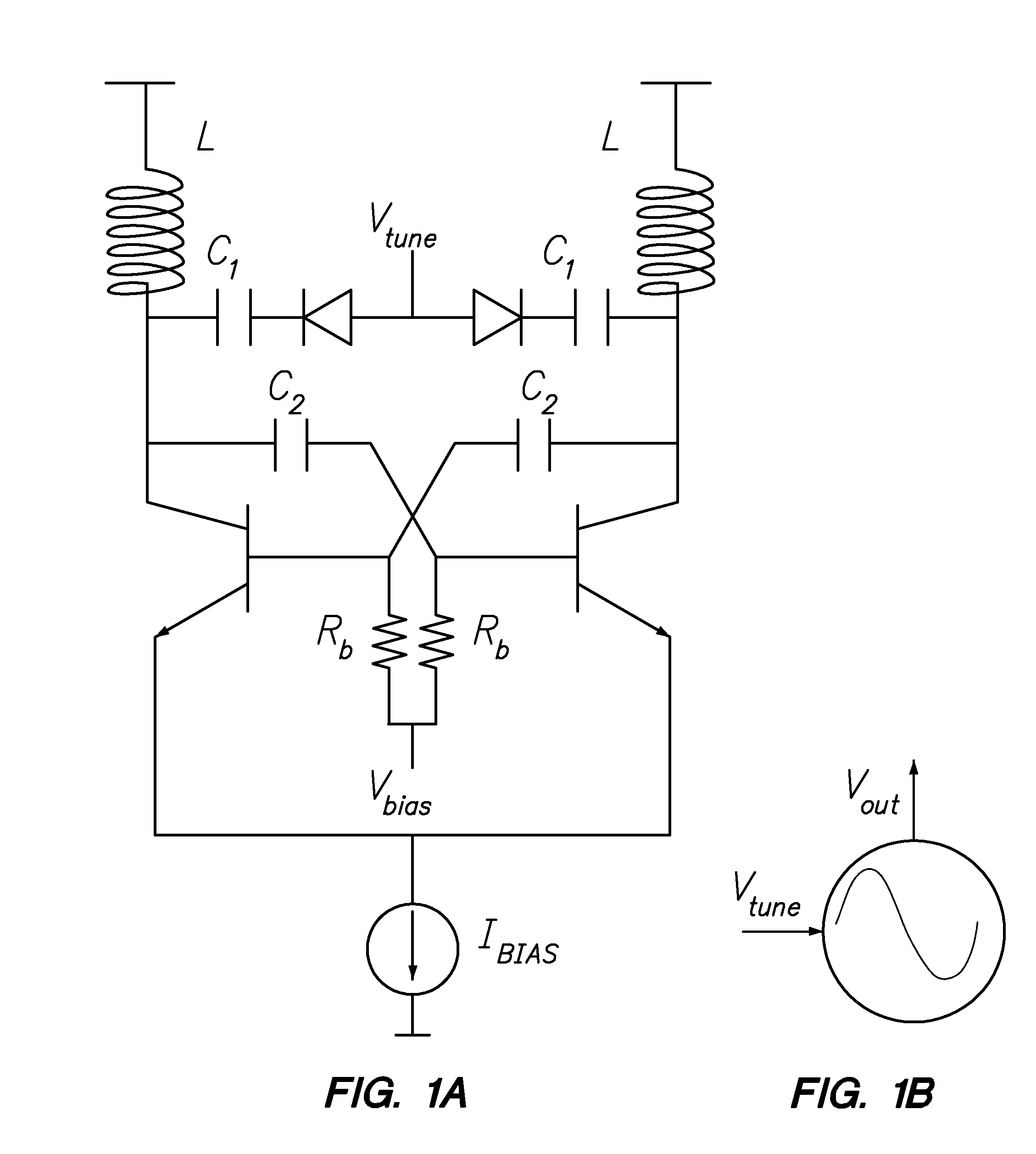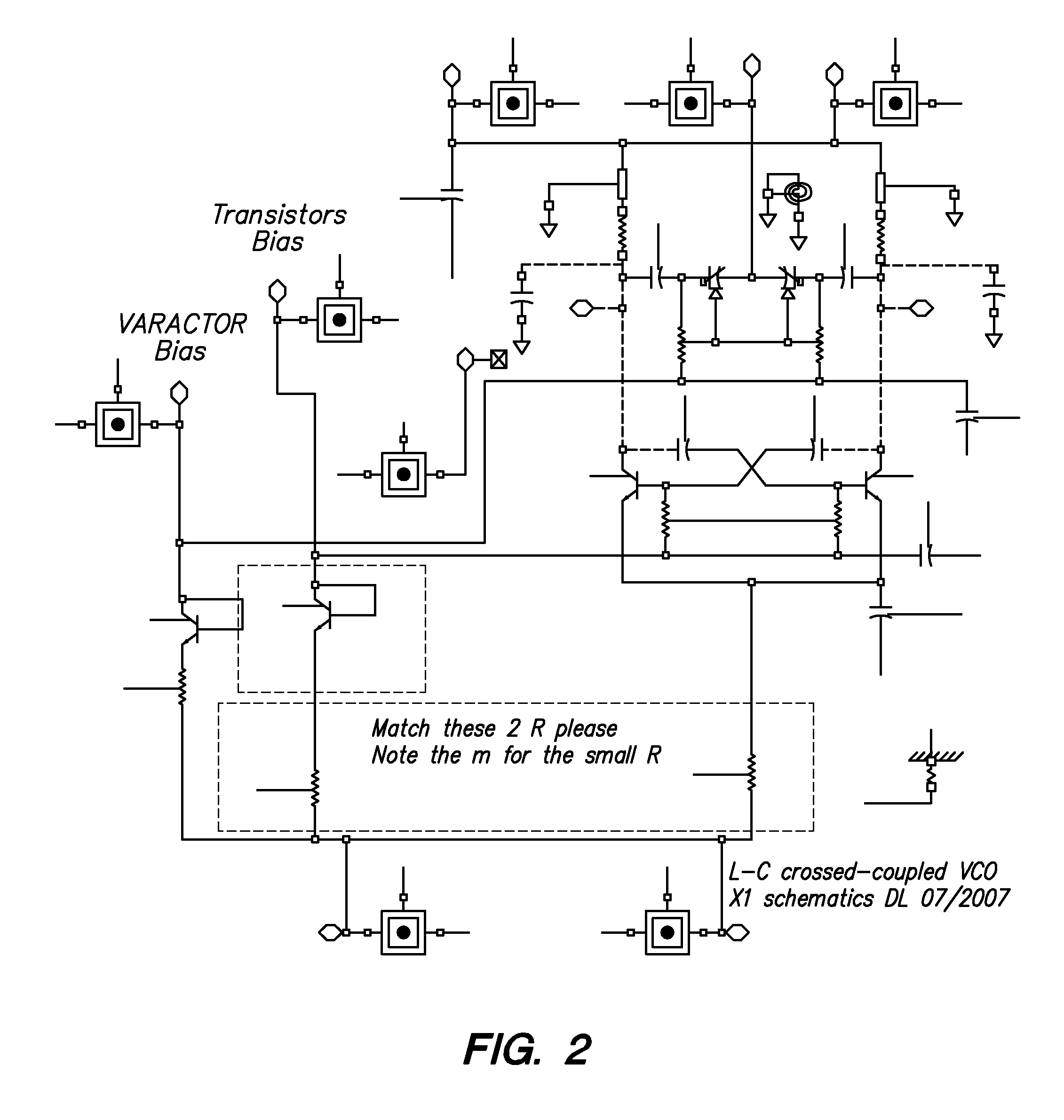Frequency tuning and phase shifting techniques using 1-dimensional coupled voltage-controlled-oscillator arrays for active antennas
a phase shifting and frequency tuning technology, applied in the direction of oscillation generators, pulse generation by logic circuits, etc., can solve the problems of high cost, large volume, and difficult to achieve robust continuous frequency tuning range of >+/20% for monolithic rf vcos
- Summary
- Abstract
- Description
- Claims
- Application Information
AI Technical Summary
Benefits of technology
Problems solved by technology
Method used
Image
Examples
Embodiment Construction
[0019]Circuit Design A simplified BJT-based VCO unit cell is shown in FIG. 1. More specifically, FIG. 1 (a) (Left portion) shows a simplified circuit schematics of the L-C VCO with ideal biasing as the basic BJT-based VCO unit cell for the 1-D VCO array design; and FIG. 1(b) (Right portion) shows a block diagram for the VCO unit cell.
[0020]This VCO is used as the basis for our 1-D VCO array design. The design utilizes an L-C tank and a crossed-coupled differential pair to generate the negative resistance for oscillation (i.e., a negative gm VCO). A pair of on-chip varactors biased by on-chip resistors are used to tune the L-C VCO oscillation frequency. The unit cell of a fully-integrated VCO and various 1-D VCO arrays have been designed and simulated in IBM 7HP BiCMOS production design kit. The VCO uses on-chip devices such as spiral inductors, MOS accumulation-mode varactors, Metal-Insulator-Metal (MIM) capacitors, several resistors, and high-breakdown / high-fT bipolar SiGe and CMOS...
PUM
 Login to View More
Login to View More Abstract
Description
Claims
Application Information
 Login to View More
Login to View More - R&D
- Intellectual Property
- Life Sciences
- Materials
- Tech Scout
- Unparalleled Data Quality
- Higher Quality Content
- 60% Fewer Hallucinations
Browse by: Latest US Patents, China's latest patents, Technical Efficacy Thesaurus, Application Domain, Technology Topic, Popular Technical Reports.
© 2025 PatSnap. All rights reserved.Legal|Privacy policy|Modern Slavery Act Transparency Statement|Sitemap|About US| Contact US: help@patsnap.com



